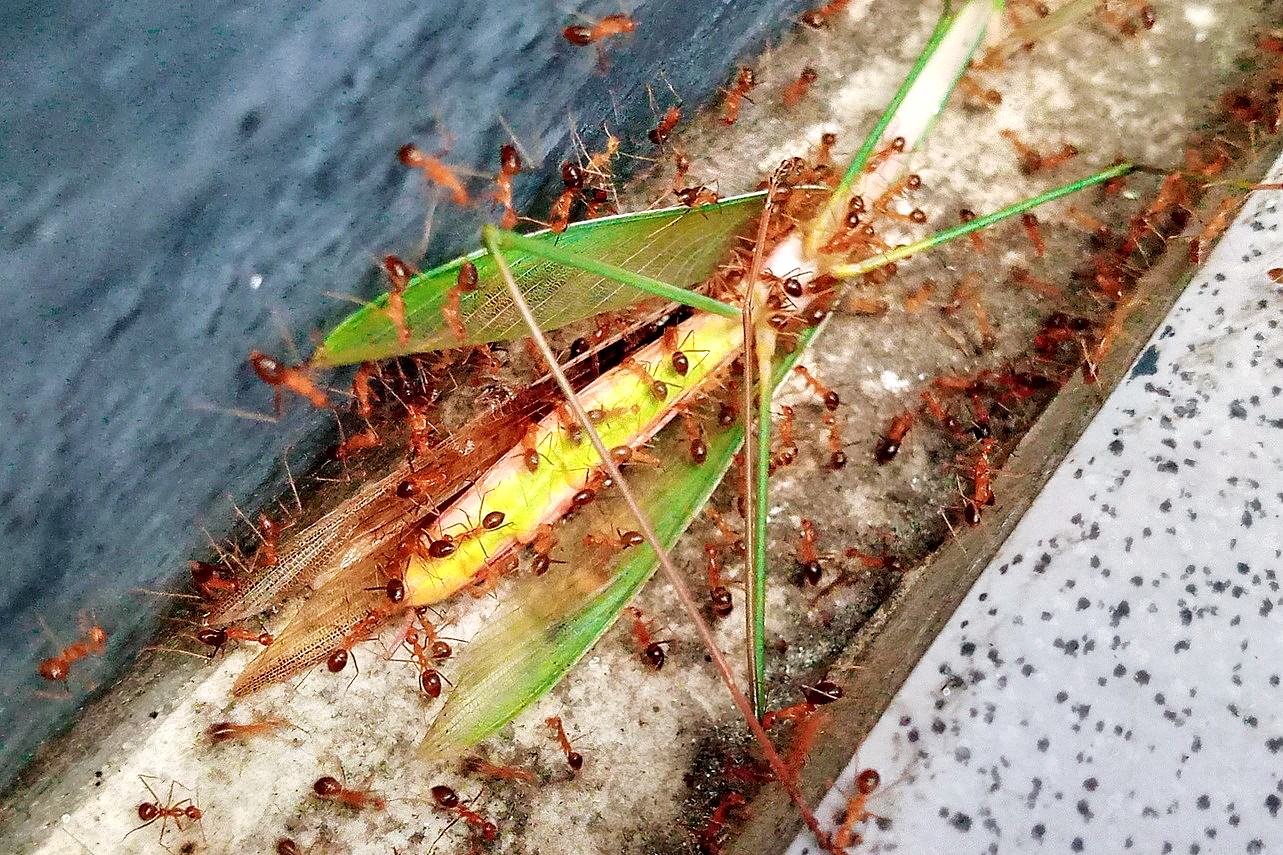🌍 Introducing the Army Ant
Greetings, everyone! Let’s start by taking a look at an award-winning photograph captured by Dr. Daniel Kronauer, an ant expert from Rockefeller University. The image depicts a crown-like formation composed of army ants, the protagonists of our story today.
While the sight might trigger trypophobia (fear of clustered holes) in some, others will find it awe-inspiring. Regardless of your reaction, this photograph sets the stage for our exploration of the legendary army ant.
🕷️ The Unstoppable Hunting Machine
Army ants are not a specific species but rather a group of over 200 ant species that share three key characteristics:
- 🔎 A relentless hunting method akin to a sweeping onslaught
- 🏕️ A nomadic lifestyle, moving their colony daily
- 🚫 A permanent lack of wings, ensuring a terrestrial existence
Among the most studied army ants are the New World army ants, such as the Eciton burchellii, found in the rainforests of South America. These ants belong to the subfamily Dorylinae, sharing a common ancestor with their African counterparts dating back over 100 million years.
The African army ants, like those from the genus Dorylus, exhibit even larger swarm sizes and more ferocious behavior than their South American cousins, despite sharing the same nomadic hunting strategies and origins from the ancient supercontinent of Gondwana.
🍽️ The Ultimate Predators
Army ants are nature’s top predators, surpassing even jaguars and harpy eagles in their daily hunting prowess. A swarm of 600,000 Eciton burchellii ants can dispatch 200,000 scouts in a sweeping fan formation, scouring a 20-meter-wide area for prey.
From insects like spiders, scorpions, and beetles to larger creatures like snakes and frogs, nothing is off-limits for these voracious hunters. Their potent venom-filled stingers can subdue even the fiercest prey through sheer numbers and relentless attacks.
Beyond insects and small vertebrates, army ants are known to raid the nests and colonies of other ant species and wasps, plundering their eggs, larvae, and pupae with impunity. The sheer force of their numbers renders individual strength insignificant, as even the most formidable wasp is powerless against the army ant onslaught.
🏡 The Living Fortress
When night falls, army ants construct remarkable living fortresses using their own bodies. Forming interlocking chains, they create a protective wall around the queen and larvae, shielding them from the elements.
This living structure boasts impressive engineering feats, including adjustable ventilation holes that maintain optimal temperature and humidity for the colony’s inhabitants. The ants’ hooked legs allow them to withstand immense pulling forces, enabling them to construct these fortresses with remarkable strength and resilience.
Scientific studies have revealed that a single army ant can withstand the weight of up to 100 fellow ants, an astonishing feat equivalent to a human arm supporting eight tons or four cars. This incredible physical prowess is a testament to the army ant’s extraordinary evolutionary adaptations.
🌉 Bridges and Ladders: Engineering Marvels
Army ants’ collective intelligence extends beyond their living fortresses. When faced with obstacles during their nomadic treks, they can form bridges, ladders, and even staircases using their bodies.
Scientific studies have revealed their ability to optimize these structures for maximum efficiency, adjusting the width and resource allocation to minimize costs while maximizing benefits. This remarkable decision-making process exemplifies the army ant’s extraordinary collective intelligence.
In one fascinating experiment, researchers used an adjustable ramp to observe the formation of ant bridges. As the angle of the ramp increased, more ants willingly sacrificed their mobility to serve as living bridge components, seamlessly compensating for the increasing difficulty of the terrain. This self-correcting system demonstrates the army ant’s ability to adapt and overcome obstacles through collective action.
🧠 The Superorganism: Awakening Collective Intelligence
Biologists often refer to army ant colonies as “superorganisms,” where the entire colony functions as a single living entity. Individual ants take on specialized roles akin to cells in a body, working in unison to ensure the survival and prosperity of the collective.
From foraging scouts acting as the “digestive system” to the queen as the “reproductive organ,” every ant contributes to the greater whole. This remarkable cooperation and division of labor have allowed army ants to thrive for millions of years, shaping entire ecosystems with their relentless hunting and nomadic lifestyle.
Moreover, army ant colonies exhibit a level of spatial awareness and planning that defies their simple brains. Through intricate cycles of migration and settlement, they systematically cover vast territories without overlapping or leaving gaps, as if guided by a preordained blueprint. This incredible spatial cognition is a testament to the emergent intelligence that arises from their collective behavior.
🌳 Ecological Significance and Conservation
Army ants play a vital role in maintaining the delicate balance of rainforest ecosystems. As top predators, they regulate populations of insects, arachnids, and small vertebrates, preventing any one species from becoming too dominant.
Additionally, their nomadic foraging patterns and relentless hunting activities contribute to the redistribution of nutrients and energy throughout the forest, ensuring a constant cycle of renewal and growth.
However, despite their ecological significance, army ants face threats from habitat loss and fragmentation due to deforestation and human encroachment. Conserving these remarkable superorganisms is crucial for preserving the intricate web of life in tropical rainforests.
Copyright © 2025 Hea1th.net

